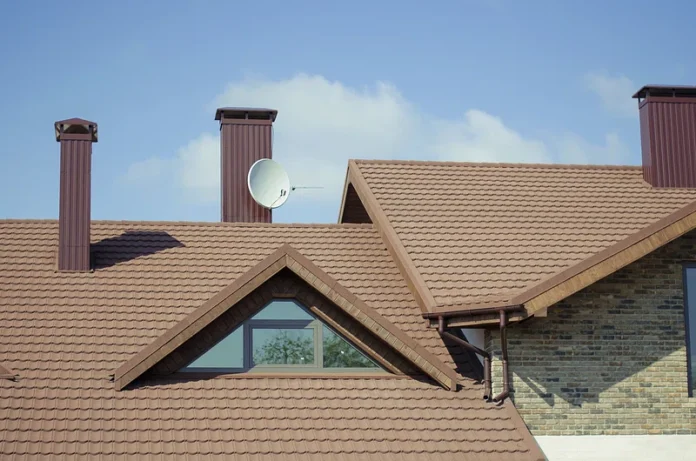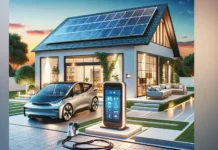In the realm of energy-saving roofs, striking that perfect equilibrium between efficiency and design is key for sustainable building solutions. Efficient roofs play a crucial role in reducing energy consumption and maintaining indoor comfort. By incorporating materials with superior thermal insulation, indoor temperatures can be regulated effectively. Energy-efficient roofs not only result in cost savings and decreased greenhouse gas emissions but also offer eco-friendly options through sustainable materials. The innovation in energy-saving technology, integration of smart systems, and focus on maximizing insulation emphasize the importance of this dynamic balance. Discover more about the evolving landscape of sustainable roofing solutions.
Table of Contents
Key Takeaways
– Energy-saving roofs maintain indoor comfort efficiently.
– Sustainable materials reduce energy consumption and lower costs.
– Balancing efficiency and design enhances aesthetic appeal.
– Innovative technology, like smart systems, promotes energy efficiency.
– Proper insulation and design integration optimize energy savings.
Importance of Energy-Saving Roofs
Energy-saving roofs play a crucial role in reducing energy consumption and enhancing the overall sustainability of buildings. When considering the energy performance of a structure, the roof is a critical component. Properly designed energy-saving roofs help maintain a comfortable indoor environment while minimizing the need for excessive heating or cooling. Achieving the right design balance is key; an effective energy-saving roof shouldn’t only improve insulation to prevent heat transfer but also consider factors like ventilation to ensure a healthy indoor environment.
To enhance energy performance, energy-saving roofs are often equipped with materials that provide better thermal insulation. These materials help regulate indoor temperatures, reducing the reliance on heating and cooling systems. Additionally, the design balance of energy-saving roofs considers factors like solar reflectance and emissivity to minimize heat absorption and lower cooling demands. By optimizing these elements, energy-saving roofs contribute significantly to the overall efficiency of a building, making it more sustainable and environmentally friendly.
Benefits of Energy Efficiency
As you consider the benefits of energy efficiency in roofing, two key advantages stand out: cost savings and environmental impact reduction.
By reducing the amount of energy required to heat or cool your building, energy-efficient roofs can lead to significant cost savings over time.
Additionally, these roofs help lower greenhouse gas emissions, contributing to a healthier environment for all.
Cost Savings Advantages
By incorporating energy-efficient roofing materials, you can significantly reduce long-term operational costs for your building. The initial investment in energy-saving roofs pays off through lower energy bills, reduced maintenance expenses, and extended roof lifespan.
The installation process might require a higher upfront cost but translates into substantial long-term savings. Energy-efficient roofs provide better insulation, reducing the need for constant heating or cooling, thus cutting down on energy consumption.
Additionally, these roofs are designed to withstand harsh weather conditions, reducing repair and replacement costs over time. By opting for energy-saving roofs, you not only contribute to a greener environment but also enjoy cost savings that positively impact your building’s overall operational budget.
Environmental Impact Reduction
Reducing energy consumption through the installation of energy-efficient roofing materials results in a significant decrease in environmental impact. By integrating renewable energy sources like solar panels into these roofs, your carbon footprint can be dramatically reduced.
The utilization of reflective roofing materials can also contribute to environmental impact reduction by lowering ambient temperatures and decreasing the urban heat island effect. Choosing cool roofs that meet ENERGY STAR standards further enhances energy efficiency and reduces greenhouse gas emissions.
These environmentally conscious decisions not only benefit you by lowering energy costs but also contribute to a sustainable future for all. Embracing energy-saving roofs with a focus on environmental impact reduction aligns with global efforts to combat climate change and fosters a sense of belonging to a community committed to preserving our planet.
Eco-Friendly Roofing Materials
When considering eco-friendly roofing materials, it’s crucial to explore sustainable options such as:
– Recycled metal
– Clay tiles
– Wood shakes
Energy-efficient roof coatings can also play a significant role in reducing heat absorption and enhancing the overall efficiency of the building.
Additionally, choosing green insulation materials like:
– Cellulose
– Recycled fiberglass
can further contribute to the sustainability of your roofing system.
Sustainable Material Options
Explore eco-friendly roofing materials that offer sustainable options for energy-saving roofs. Green roofing has gained popularity due to its environmentally conscious benefits.
Sustainable options like recycled shingles made from materials such as wood, rubber, or plastic provide durability while reducing waste. Metal roofs are another sustainable choice, offering longevity and recyclability. Opting for cool roofs with reflective surfaces helps reduce heat absorption, lowering cooling costs and energy consumption.
Living roofs, covered with vegetation, offer natural insulation and absorption of rainwater, enhancing energy saving roof. When selecting sustainable roofing materials, consider factors like durability, insulation properties, and environmental impact to ensure your roof contributes to energy savings and environmental preservation.
Energy-Efficient Roof Coatings
To further enhance the energy-saving potential of sustainable roofing materials, consider incorporating energy-efficient roof coatings that offer both environmental benefits and improved thermal performance. Energy-efficient roof coatings utilize reflective surfaces to reduce heat absorption, thus aiding in thermal regulation within buildings.
These coatings can help lower indoor temperatures during hot weather, reducing the need for excessive cooling and lowering energy costs. By reflecting sunlight away from the roof, these coatings also contribute to mitigating the urban heat island effect.
Choosing energy-efficient roof coatings not only promotes sustainability but also enhances the overall energy efficiency of a building. Incorporating these coatings into your roofing system can significantly impact energy consumption and contribute to a more environmentally friendly structure.
Green Insulation Choices
Consider incorporating eco-friendly roofing materials like green insulation choices to enhance the sustainability and energy efficiency of your building’s roof.
When it comes to green building, selecting the right insulation is crucial for improving thermal performance. Opt for materials such as recycled cellulose, wool, or cork, which offer excellent thermal resistance and are environmentally friendly. These options not only provide effective insulation but also contribute to reducing your carbon footprint.
Recycled cellulose, for instance, is made from recycled paper and has great insulating properties. Wool insulation is a natural and renewable choice that performs well in regulating temperatures. Cork insulation is another sustainable option known for its thermal performance and sound absorption qualities.
Trends in Sustainable Roof Design
In sustainable roof design, incorporating green technologies has become a prevalent practice in recent years, with a focus on enhancing energy efficiency and environmental impact. When looking at current trends in sustainable roof design, you’ll notice a shift towards innovative solutions that not only reduce energy consumption but also contribute to a greener environment.
Here are three key trends shaping the landscape of sustainable roof design:
1. Green Roofs: Increasingly popular in urban landscapes, green roofs are designed to support vegetation, providing insulation, reducing stormwater runoff, and combating the urban heat island effect. These roofs not only enhance energy efficiency by reducing cooling needs but also add aesthetic value to buildings.
2. Solar Panels: Integration of solar panels for energy generation is on the rise. By harnessing the power of the sun, buildings can offset their energy consumption and even contribute excess energy back to the grid, promoting sustainability and cost-efficiency.
3. Cool Roofing Materials: The use of cool roofing materials, designed to reflect sunlight and absorb less heat, is gaining traction. These materials help reduce the heat island effect, decrease cooling costs, and ultimately enhance the overall energy performance of buildings.
Innovations in Energy-Saving Technology
Exploring the forefront of sustainable roof design reveals a realm of cutting-edge innovations in energy-saving technology that are revolutionizing the way buildings optimize efficiency and environmental impact. Smart technology integration plays a pivotal role in this transformation. By utilizing sensors and automated systems, roofs can now intelligently adjust ventilation, lighting, and temperature controls to minimize energy consumption. These innovations not only enhance comfort but also significantly reduce utility costs.
Solar panels represent another breakthrough in energy-saving technology for roofs. By harnessing the power of the sun, buildings can generate clean electricity and reduce their reliance on traditional energy sources. The latest advancements in solar panel efficiency and design have made them more accessible and aesthetically pleasing, seamlessly blending into various architectural styles.
Incorporating these energy-saving technologies into roof designs not only benefits the environment but also adds value to buildings. As the demand for sustainable solutions grows, embracing these innovations ensures that structures remain efficient, eco-friendly, and in tune with modern energy-saving trends.
Maximizing Insulation for Efficiency
To optimize energy efficiency in roof design, ensuring proper insulation is paramount for maximizing thermal performance and reducing heat loss. When it comes to maximizing insulation for efficiency, there are key factors to consider:
1. Thermal Performance: Selecting insulation materials with high R-values is crucial for enhancing the roof’s ability to resist heat flow. Materials like spray foam insulation or rigid foam boards offer excellent thermal resistance, helping to maintain a consistent temperature within the building and reduce the load on heating and cooling systems.
2. Insulation Materials: Choosing the right insulation materials is essential for achieving optimal thermal performance. Options such as fiberglass, cellulose, or mineral wool provide varying levels of thermal resistance and can be tailored to suit specific project requirements.
3. Installation Techniques: Proper installation of insulation is equally important as selecting the right materials. Ensuring a continuous layer of insulation without any gaps, compressions, or thermal bridges is critical to maximizing energy efficiency and preventing heat loss through the roof structure.
Design Integration for Aesthetics
Considering the thermal performance achieved through proper insulation, the next critical aspect to address is integrating design elements that enhance aesthetics without compromising energy efficiency. Aesthetics integration in energy-saving roofs involves finding a delicate balance between functionality and visual appeal. To achieve this balance, it’s essential to choose materials and colors that not only complement the overall design of the building but also contribute to its energy-saving capabilities.
Design balance plays a crucial role in ensuring that energy-saving roofs seamlessly blend with the existing architecture while still standing out as a visually appealing feature. By incorporating elements such as green roofs, solar panels, or cool roof coatings, you can enhance the aesthetics of the building while also increasing its energy efficiency. These design choices not only improve the overall look of the structure but also demonstrate a commitment to sustainable practices.
Cost-Effectiveness of Energy-Saving Roofs
The cost-effectiveness of energy-saving roofs can be evaluated by analyzing the initial investment against long-term savings and benefits. When considering the implementation of energy-saving roofs, it’s essential to conduct a thorough cost analysis to determine the feasibility and potential returns on investment.
1. Initial Cost: The upfront cost of installing energy-saving roofs may be higher than traditional roofing options. However, when looking at the long-term benefits, such as reduced energy consumption and lower maintenance costs, the initial investment can often be justified.
2. Energy Consumption: Energy-saving roofs are designed to improve insulation and reduce heat transfer, leading to lower energy consumption for heating and cooling purposes. By lowering energy usage, these roofs can result in significant cost savings over time.
3. Return on Investment: Calculating the return on investment for energy-saving roofs involves comparing the initial cost with the expected savings on energy bills and maintenance expenses. In many cases, the long-term savings outweigh the initial investment, making energy-saving roofs a cost-effective choice for environmentally conscious homeowners.
Future of Sustainable Roofing Solutions
When exploring the future of sustainable roofing solutions, advancements in material technology are shaping the way for more efficient and eco-friendly options. Innovative solutions such as green roofs, solar shingles, and cool roofs are paving the path for sustainable roofing trends.
Green roofs, which are covered with vegetation, offer natural insulation and stormwater management benefits. Solar shingles integrate solar cells into traditional roofing materials, harnessing renewable energy efficiently. Cool roofs, designed to reflect sunlight and absorb less heat, reduce energy costs and mitigate the urban heat island effect.
Future trends indicate a shift towards smarter roofing systems that incorporate automation and monitoring capabilities. These systems can adjust ventilation, insulation, and energy production in real-time to optimize efficiency. Additionally, the use of recycled and environmentally friendly materials is becoming more prevalent in sustainable roofing construction.
Conclusion
As you consider the rise of energy-saving roofs, remember the importance of balancing efficiency and design.
With eco-friendly materials, innovative technology, and integrated insulation, sustainable roofing solutions are becoming more cost-effective and aesthetically pleasing.
By embracing these trends and advancements, you can contribute to a greener future while enjoying the benefits of energy efficiency in your own home or building.
Stay informed and make informed choices for a more sustainable tomorrow.
Apart from this, if you are interested to know more about Metal Roofs for Residential Homes then visit our Home Improvement category























